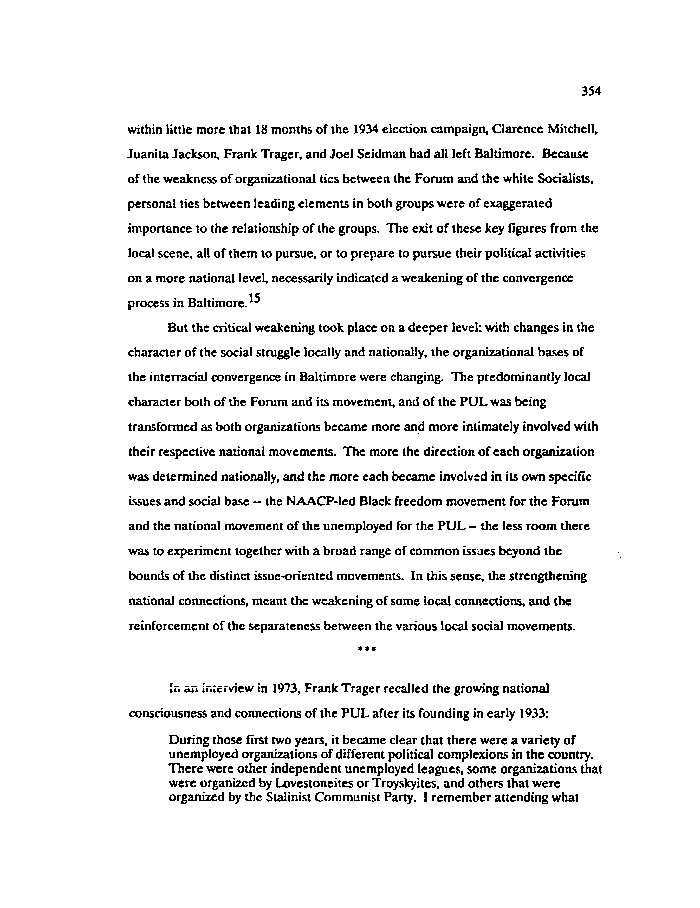|
354
within little more that 18 months of the 1934 election campaign, Clarence Mitchell,
Juanita Jackson, Frank Trager, and Joel Seidman had all left Baltimore. Because
of the weakness of organizational ties between the Forum and the white Socialists,
personal ties between leading elements in both groups were of exaggerated
importance to the relationship of the groups. The exit of these key figures from the
local scene, all of them to pursue, or to prepare to pursue their political activities
on a more national level, necessarily indicated a weakening of the convergence
process in Baltimore.
But the critical weakening took place on a deeper level: with changes in the
character of the social struggle locally and nationally, the organizational bases of
the interracial convergence in Baltimore were changing. The predominantly local
character both of the Forum and its movement, and of the PUL was being
transformed as both organizations became more and more intimately involved with
their respective national movements. The more the direction of each organization
was determined nationally, and the more each became involved in its own specific
issues and social base — the NAACP-led Black freedom movement for the Forum
and the national movement of the unemployed for the PUL - the less room there
was to experiment together with a broad range of common issues beyond the
bounds of the distinct issue-oriented movements. In this sense, the strengthening
national connections, meant the weakening of some local connections, and the
reinforcement of the separateness between the various local social movements.
• *•
In an interview in 1973, Frank Trager recalled the growing national
consciousness and connections of the PUL after its founding in early 1933:
During those first two years, it became clear that there were a variety of
unemployed organizations of different political complexions in the country.
There were other independent unemployed leagues, some organizations that
were organized by Lovestoneites or Troyskyites, and others that were
organized by the Stalinist Communist Party. I remember attending what
|

